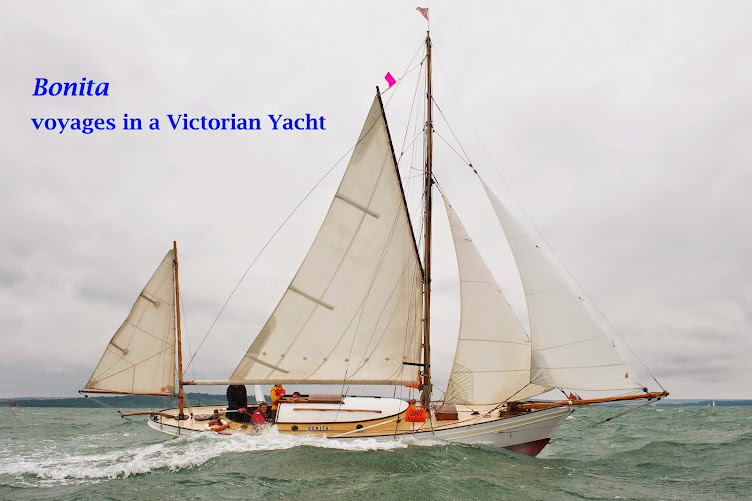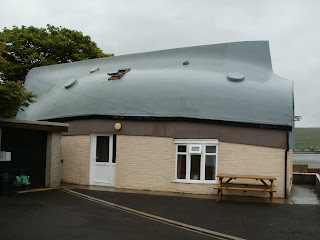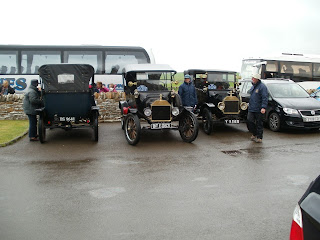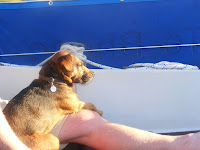As I leave to sadly fly south to the madness of normal life, my mind is filled with many impressions. But one the strongest is how well we all live together in such a small space. Bonita is a beautiful old lady that can pack a punch in a good breeze and stay with or ahead of the best of them. But she also packs a huge amount into such a small space. With respect for each other, and a flexible spine, life progresses pretty well.
Starting in the forecastle (pronounced folk-saul), we have a multi purpose space tucked far up inside Bonita's bow. The first picture shows Skipper Mike using it as his cabin after having tea and biscuits delivered by the cabin boy/IT Director. He assures us that the en-suite toilet and lack of light make it ideal for him. The latter point, this far North where it never gets dark, is key to getting a good sleep in the Outer Hebrides in the summer. But I suspect he will be back in the main cabin with his brother Tim the moment I've left!
The next picture shows the 'daytime' layout when the fo'c's'le is used as a sail locker and as the 'head' (toilet). When the alternative is a rubber bucket or hanging in the shrouds (rigging), this tiny, cramped space can seem very welcoming indeed.
Above is the main cabin. This has a folding table which we seldom use, lots of storage and two more bunks. It also has an excellent and smell-free paraffin heater and a rather less odour-free paraffin lamp.
Tim can be seen relaxing after a long watch - again with the obligatory tea. All our sleeping bags are securely put away each day and we end up with these two low, comfortable settees.
You leave Bonita through a multipurpose space. On the starboard (right) side is the galley. Here we have more storage, an excellent two ring gas burner & grill, a sink with a beautiful brass fresh water pump, and a massive store of the skipper's digestive biscuits. The chef sits on the battery box and keeps out of the companion way when things get busy. Cold storage is supplied by the bilge (the coldest place on board). This also luckily allows the chef to grease the propellor drive shaft at the same time. Battened and reefed down during a night passage, this 'fuelling station' produces a continuous flow of tea and piping hot ravioli. In a quiet, well protected berth, the same galley can produce 3 course cordon bleu meals.

Directly across from the galley (and sitting directly on top of the engine box) is the navigation table. In the shelf below is a massive collection of charts. These are still very necessary since the electronic chart plotter can often omit important information - like the port name! On the shelf above are all the bits and pieces needed for this demanding job - including a bottle sherry for difficult decisions...and an EPIRB emergency distress beacon.
On the right hand side, the picture shows the depth gauge (always on), electronic chart plotter, engine controls, cellhone for transmitting our position and receiving weather forecasts, and the VHF radio.
The picture at the end shows the whole crew gathered wearing their Beckett Rankine sailing shirts gathered round the statue of a Stornoway Herring Girl. These tough, independent women followed the fishing fleet as it followed the herring migration round the top of Scotland, following the same route as Bonita. They contributed hugely by packing the salted fish for export - which the statue depicts. See
here for more.
In summary, life in Bonita is not as tough as it was for the herring girls. But it does demand mutual respect, a flexible body and good forward planning. Get those right and you will always be rewarded with harmonious companionship and an enjoyable trip to places that very few people visit (and I don't mean just the fo'c's'le)


















































